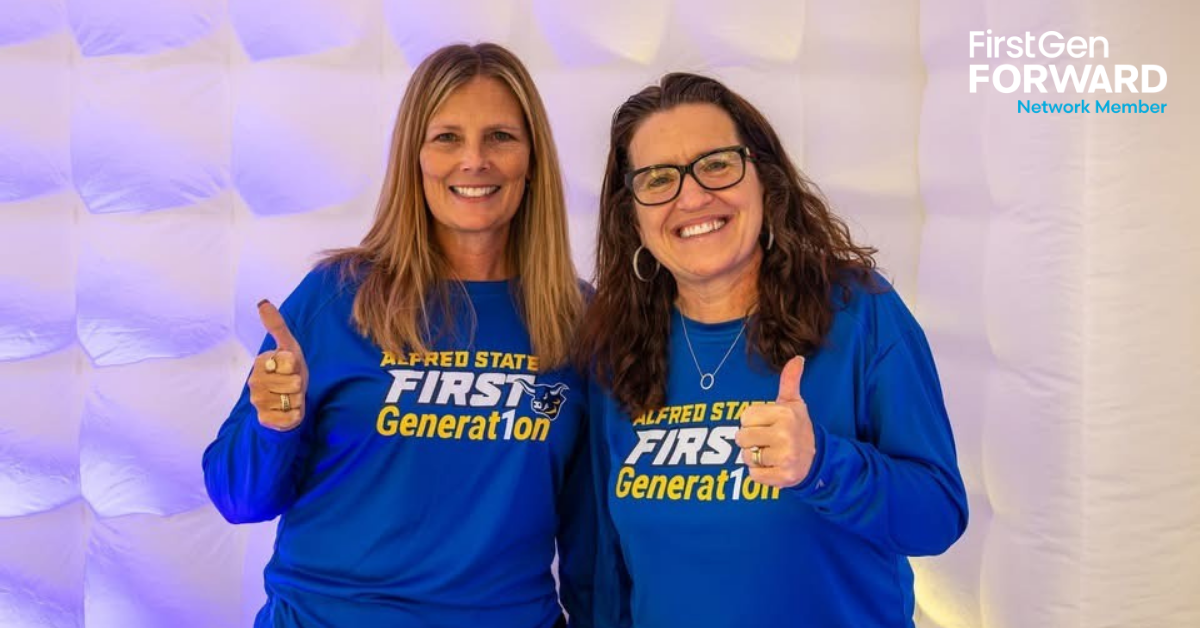Launching a first-generation student initiative can feel daunting—especially when there’s no single office dedicated to the effort. Research shows that checklists are a deceptively simple yet powerful tool for organizing complex projects. As Atul Gawande notes in “The Checklist Manifesto”, checklists help teams avoid oversights, improve communication, and maintain consistency across tasks. At Alfred State, we’ve embraced this principle by creating a cross-divisional checklist model to guide our FirstGen program from concept to campus-wide impact.
Why a Checklist Model Works
First-generation success touches every corner of campus—admissions, academics, student life, athletics, and alumni engagement. Without a central office, it’s easy for momentum to stall or responsibilities to blur. Our solution was to build a structured checklist organized by functional areas, ensuring clarity and accountability across divisions.
Our plan includes core categories such as:
Structural: Steering committee formation, definition updates, network membership(s)
Visibility: Branding, webpage updates, faculty/staff directory icons
Academic Support: Workshops on finals prep, mental well-being, and career readiness
Student Engagement: Launch events, athletic recognition, service opportunities
Advancement and Alumni: Fundraising strategies and alumni connections
Checklist in Action
Over the past year, our checklist helped us:
- Update our campus definition of first-generation
- Create a list of student support resources and workshops to provide our first-generation students with critical information to boost their success
- Identify “special access” events for the first-generation cohort such as the professional clothing closet or tickets to the business etiquette dinner
- Host a November celebration with an ice cream bar, photo booth, and branded giveaways to build cohort pride and community
- Add a FirstGen visual icon to the online faculty/staff directory, helping students identify mentors who share their experience
- Plan athletic contests recognizing first-gen student-athletes that build community
- Launch the Nu Theta Chapter honor society to recognize our first-generation scholars
Our checklist-based plan sets clear benchmarks: increasing fall-to-fall retention of our first-generation students by 2% annually, and raising first-generation student pride scores from 8.77 to 9+.
The checklist ensures that no area is overlooked. For example, our visibility efforts include planned monthly spotlights and new workshops for our faculty-facing professional development weeks that start each of our semesters. Student engagement is fostered through events, recognition, and cohort-building activities.

Benefits of a Checklist Model for Institutions
- Shared ownership: Everyone sees where they fit
- Clear next steps: No ambiguity about priorities
- Scalable: Works for any campus or resource level
- Sustainable: Encourages long-term planning and accountability, allowing easier succession when the checklist changes hands
Checklist Tips for Institutions
- Break tasks into categories (structural, visibility, academic, engagement)
- Assign owners and timelines for each item
- Review progress monthly to maintain momentum
- Celebrate small wins to keep teams motivated
- Use the checklist as a living document—update it as your program evolves (and perhaps even to replace traditional meeting minutes)
Call to Action
If your campus is starting from scratch, consider a checklist approach. It’s simple, transparent, and effective for building a first-gen culture without a dedicated, central office.
For more information on the Alfred State College's approach, please visit their website here.


.png)